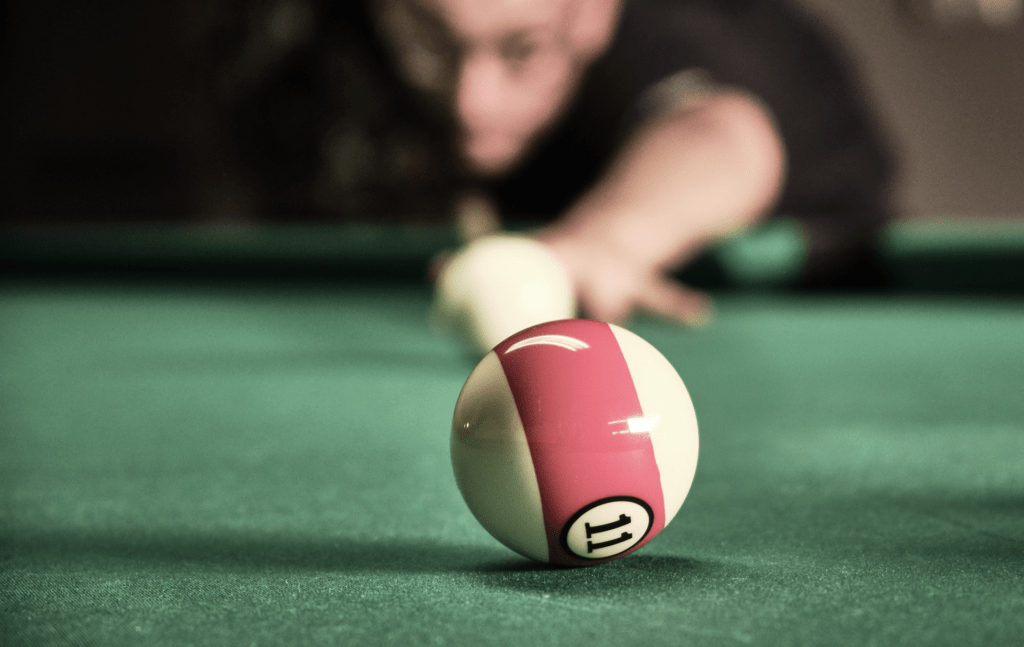Are you a foosball or pool type of guy? Or maybe both, why not?
Whether you prefer one over the other, or just love playing both equally, you’re probably here for the same reason as everyone else: you want to learn a new way to play the classic table game of pool.
Pool or billiards is a game and a sport for people of all ages. Almost anyone can learn how to play it (maybe with the exception of newborns, obviously). Whether it’s a 6-year-old kid who’s gotten a little curious after seeing his dad play or an 85-year-old grandpa, this tabletop game has been a crowd favorite for many generations.
But where did pool or billiards even start and how did it come to be?

Top 4 Games You Can Play On Pool Tables
History of Pool
There is actually a reason why you’d often associate a game of pool or billiards with the elite or upper class society. Apart from being a less rigorous sport like tennis or rugby, the reason why you’d often hear phrases like “a noble game of billiards” might be because it was first played by the nobility in the 1400 to 1600s (read more).
While we cannot historically pinpoint who or where it started, it is believed to have been created in Europe where a similar sport was very popular: the game of croquet.
Croquet is a game where you, along with competing players, race to see who can get the ball through six hoops distributed across the “court” or game arena and hit the last peg. It’s a lawn sport that is played outside similar to golf and is a popular pastime of noblemen and women.
It is said that billiards was created as a tabletop version of croquet so that people could play even if weather conditions aren’t as favorable outside. The green, velvety cover of the modern pool table is also believed to have been a design created to mimic the look of grass.
Even the word “billiards” is believed to have originated from the mace-like stick that they used to play with back then called a “billart” and the balls were referred to as the “bille.”
After decades and centuries have passed, the tabletop game evolved into the pool or billiards game that we know today. Even now, we continue to discover new ways to enjoy house pool tables – like the games we’re going to talk about in this article.
If you’re looking for a new way to enjoy your pool table at home, here are 4 games we suggest you play:
Eight Ball
This game divides the balls into stripes and solids with 7 balls being in each category – balls 1 to 7 being solids and 9 to 15 being stripes. The 8th ball or the black ball is the winning ball of the game and whoever sinks it first wins the game.
Before you can go about hitting the 8th ball, however, you first need to sink your first 7 balls. All solids or all stripes depending on what you get assigned after the break shot (if you do the break, whatever ball goes in first is, either stripe or solid, is what you stick with throughout the game). Another way to win is if you sink the 8th ball during the break shot without the cue ball (white) going in as well.

Nine Ball
This is the most common way to play as it’s fast paced; this is probably how you already play as well. The game is set with 9 balls to sink chronologically which means you have to hit the ball with the lowest number first and work your way up.
Some people play it with a “best of” rule (e.g., best of 5), or with a points system. Check out more games here: https://www.cuecave.com/7-popular-types-of-billiards-games/.
15 Ball
This is similar to Nine Ball but in this case, you use the entire set of balls a pool table comes with – which is 15 colored balls plus 1 cue ball. The game is also played chronologically, and a points system is used to calculate the score.
What makes this game exciting is you can still overturn the game even if your opponent had a strong start because the last five balls carry a lot of points. Your opponent can sink the first 10 balls one after another until you get your turn, but you can sink the last 5 and still win.
Straight Pool
If you’re looking for a game focusing on skill, then straight pool is for you. Just as the name suggests, the game is continuous and is only considered done once one of the players has reached the max agreed-upon number of points (e.g., 120). The balls have no hitting order and players focus on sinking as many balls as they can during their turn. If balls have run out and no player has reached the maximum points, the balls are simply re-racked at the center and the game is continued.
